
Are you in the Netherlands, wanting to get to know some nice Dutch people, but you don’t know how? Making friends and getting to know people can be hard, especially when you’re in another country. Luckily, there’s an easy way to break the ice: asking questions in Dutch. This is a great way to start conversations—and keep them going.
Through asking questions, you’ll get to know your conversation partner, get personal, and maybe even become friends. And you’ll be able to practice your Dutch listening and speaking skills at the same time!
In this guide, you’ll learn everything about asking questions in Dutch, from the Dutch question words to making yes/no questions. We’ll also introduce you to the ten most common Dutch questions and the different answers you can give. By the end of this article, you’ll not only know how to make questions in Dutch, but also how to answer them!
 Table of Contents
Table of Contents
- The Golden Rules of Dutch Questions
- The 10 Most Common Dutch Questions
- How DutchPod101 Can Help You Learn More Dutch
1. The Golden Rules of Dutch Questions
Before we go to our list of the ten most common Dutch questions, there are some basics you need to understand concerning how to make those questions in Dutch.
A- Questions Beginning with Dutch Question Words
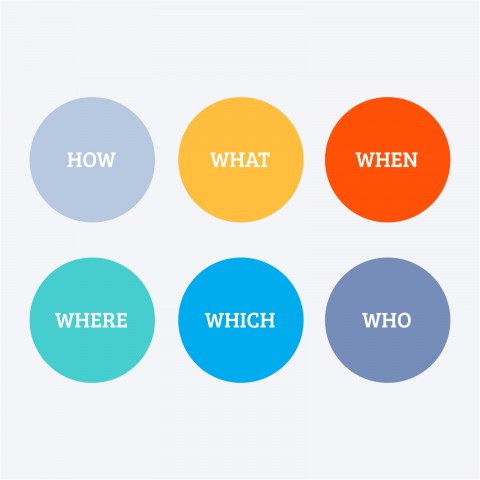
How? What? Why? Where? Who? When?
You know the English ones, so let’s learn more about question words in Dutch!
There’s a special Dutch question structure for questions that use interrogative words at the beginning. The question word comes first, the conjugated verb second, and the subject third:
Question word + Verb + Subject
Let’s have a look at two simple examples:
- Waarom lach je? (“Why do you laugh?”)
- Wanneer trouwt je zoon? (“When does your son get married?”)
Now have a look at more Dutch question words:
| Hoe (“How”) | Hoe voel je je? (“How are you feeling?”) |
| Wat (“What”) | Wat doe je morgen? (“What are you doing tomorrow?”) |
| Waarom (“Why”) | Waarom is je vriendin boos? (“Why is your girlfriend mad?”) |
| Waar (“Where”) | Waar ligt Den Bosch? (“Where is Den Bosch?”) |
| Wie (“Who”) | Wie ben jij?(“Who are you?”) |
| Wanneer (“When”) | Wanneer is zijn verjaardag? (“When is his birthday?”) |
B- Yes/No Questions
Another common question form Dutch people use is the yes/no question; as you know, these are questions that can be answered with a “yes” or a “no.” Questions like this have a different word order, with the verb coming first:
Verb + Subject
For example:
- Kom je? (“Are you coming?”)
- Werkt hij? (“Does he work?”)
As you can see here, the subject and verb are inverted to create yes/no questions.
Remember that when jij or je (“you”) follows the verb, the -t at the end of the verb is dropped:
- Ga je morgen naar school? (“Are you going to school tomorrow?”)
- Instead of: Je gaat morgen naar school. (“You are going to school tomorrow.”)
- Heb je vandaag met je oma gepraat? (“Did you talk to your grandmother today?”)
- Instead of: Je hebt vandaag met je oma gepraat. (“You talked with your grandmother today.”)
- → For more Dutch question examples, don’t forget to have a look at our list of the top 25 questions you need to know on DutchPod101.com.
2. The 10 Most Common Dutch Questions
Now that you know the golden rules of forming basic Dutch questions, it’s time to dive into the ten most common questions in Dutch.

1. How are you?
This basic Dutch question is the most common way to start talking to someone, whether you’ve met before or not.
However, be aware that in the Netherlands, this question isn’t just a formality. In some cultures (such as Spanish or French), someone can ask this question without really expecting a comprehensive answer. This is not so much the case in the Netherlands. When the Dutch ask this question, they’re usually interested in the answer. Of course, your answer may be more or less detailed depending on how well you know the other person.
How are you?
- Hoe gaat het met je? [Casual]
- Hoe gaat het met u? [Formal]
Another informal way to ask this question is: Alles goed? (“Everything fine?”)
Possible answers for this question include:
- ► Het gaat goed met me. (“I am doing great.”)
► Ik voel me niet goed. (“I am not feeling well.”)
► Het gaat wel. (“I am fine.”)
► Ik heb het erg druk. (“I am very busy.”)
As you can see, we used the question word hoe (“how”), followed by the conjugated verb.
As you go through the rest of this article, ask yourself which structure each question uses: the one with a question word at the beginning or the yes/no structure.
2. What are you doing?
If you know someone well and want to know what they’re up to, this question is perfect.
However, it’s not the way to go when talking with strangers, as this random Dutch question can seem quite invasive (especially with the sometimes distant Dutch people).
What are you doing?
- Wat doe je? [Casual]
- Wat doet u? [Formal]
Let’s see some possible answers:
- ► Ik lees. (“I am reading.”)
► Ik kijk een film. (“I am watching a movie.”)
► Ik ben aan het studeren. (“I am studying.”)
► Ik ben aan het koken. (“I am cooking.”)
In the ik ben aan het + verb structure, you can replace the verb (studeren or koken) with the verb that’s applicable to your situation.
- → Would you like to learn some more verbs? Have a look at these 50 most common verbs.
3. What’s your name?

Are you meeting someone new in the Netherlands? Then it’s crucial to be able to ask for their name. This is also a great ice-breaker, as it shows your interest in that person. And once the conversation’s been started, there will be plenty more questions to come!
What’s your name?
- Wat is je naam? [Casual]
- Wat is uw naam? [Formal]
Another way to ask this question in Dutch is:
- Hoe heet je? [Casual]
- Hoe heet u? [Formal]
Let’s now have a look at the answers:
- ► Ik heet Sophie. (“My name is Sophie.”)
► Mijn naam is Sophie. (“My name is Sophie.”)
► Ik ben Sophie. (“I am Sophie.”)
4. Where are you from?
As a foreigner in the Netherlands, you’ll often hear this question. By learning how to ask this question in Dutch, you’ll have the perfect way to stimulate a conversation. While you can ask this to a foreigner, asking this to a Dutch person may help them open up about their hometown or the region they’re from.
Where are you from?
- Waar kom je vandaan? [Casual]
- Waar komt u vandaan? [Formal]
Let’s have a look at some possible answers:
- Foreign answers
► Ik ben Duits. (“I’m German.”)
► Ik kom uit Frankrijk. (“I’m from France.”)
Local answers
► Ik kom uit Amsterdam. (“I’m from Amsterdam.”)
► Ik ben een Rotterdammer. (“I’m a Rotterdammer.” – a person from Rotterdam)
► Ik kom uit Brabant. (“I’m from Brabant.”)
Has your interlocutor given you the name of a place you’re not familiar with? Then you can ask this:
Where is it?
- Waar is dat?
- Waar ligt dat?
- ► In het Zuiden van Nederland. (“In the south of the Netherlands.”)
► Vlakbij Den Haag. (“Close to The Hague.”)
► Het is een stad in Noord-Italië. (“It is a city in northern Italy.”)

- → Have a look at the Dutch name of your country. Can’t find your country on this list? Then check out this extensive list of country names in Dutch.
5. Where do you live?
It’s nice to know where someone is from, but it may be more useful to know where someone is living. Let’s have a look at this common Dutch question:
Where do you live?
- Waar woon je? [Casual]
- Waar woont u? [Formal]
► Ik woon in Breda. (“I live in Breda.”)
► Ik woon in de provincie Groningen. (“I live in the province of Groningen.”)
- → Do you live in the Netherlands, but still struggle with the pronunciation of city names? Then have a look at our major Dutch cities list with audio recordings.
6. Have you been to [place]?
You’ve just told someone where you’re from or where you live. Let’s keep that conversation going and ask if they’ve ever been to that place. This way, you’ll show your interest and get to know more about someone’s (traveling) past.
Have you been to [place]?
- Bent u in [place] geweest? [Casual]
- Ben je in [place] geweest? [Formal]
- → As you can see, this is a yes/no question that starts with the verb, followed by the subject.
Other ways to ask this question are:
- Ben je ooit in Brussel geweest? (“Have you ever been to Brussel?”)
- Heb je door Zuid-Amerika gereisd? (“Have you traveled through South America?”)
Possible answers include:
- ► Ja, ik ken [place] erg goed. (“Yes, I know [place] very well.”)
► Ja, ik ben er vorig jaar nog geweest. (“Yes, I went there last year.”)
► Ik ben er heel lang geleden geweest. (“I was there a long time ago.”)
► Nee, ik ben daar nog nooit geweest. (“No, I’ve never been there.”)
7. Do you speak Dutch?

The language question: another crucial Dutch question for any foreigner in the Netherlands. You’ll receive this question a lot yourself, but learning this structure will be useful for you too. You never know when you’ll need to communicate in your native language or a different common language.
Do you speak Dutch?
- Spreek je Nederlands? (“Do you speak Dutch?”) – Casual
- Spreekt u Nederlands? (“Do you speak Dutch?”) – Formal
- Spreek je Engels? (“Do you speak English?”) – Casual
- Spreekt u Engels? (“Do you speak English?”) – Formal
Let’s have a look at some possible answers:
- ► Ik spreek een beetje Nederland. (“I speak a little Dutch.”)
► Ik spreek vloeiend Engels. (“I speak English fluently.”)
► Min of meer. (“So-so.”)
8. What do you do?

You know how your new acquaintance is doing, you know their name, and you know where they’re from and where they live. You even know the languages they speak. What’s left to ask? A logical followup question is to ask about someone’s work or study.
What do you do?
- Wat doe je? [Casual]
- Wat doet u? [Formal]
If you’re in a bar and you just say Wat doe je? the other person could be caught off guard by this random Dutch question, and answer “I am drinking a beer, why?” So when you ask this question out of nowhere, it may be better to be a bit more specific:
- Wat voor werk doe je? (“What kind of work do you do?”)
- Wat is jouw baan? (“What’s your job?”)
- Waar werk je? (“Where do you work?”)
- Wat voor een studie doe je? (“What kind of study do you do?”)
- Wat studeer je? (“What do you study?”)
- Waar studeer je? (“Where do you study?”)
- → The questions from this point on are in the casual, more common Jij/Je form, but you could make them more formal by using U or Uw.
- → Would you like to learn when to use the formal or casual form in Dutch? Start by finding out what to say when you do business in the Netherlands.
Some possible answers are:
- ► Ik ben politieagent. (“I’m a police officer.”)
► Ik werk in IT. (“I work in IT.”)
► Ik werk in een kledingwinkel. (“I work in a clothing store.”)
► Ik studeer anthropologie. (“I study anthropology.”)
► Ik studeer aan de Universiteit van Amsterdam. (“I study at the University of Amsterdam.”)
- → Not sure how to talk about your job in Dutch? Have a look at our free vocabulary list on Jobs.
9. What are your hobbies?
For the Dutch, their work is important. But many believe that their hobbies and interests define them more than their work. So a great way to show your interest in the other person and find common ground is to ask them about their hobbies.
What are your hobbies?
- Wat zijn je hobby’s?
- Wat doe je graag in je vrije tijd? (“What do you do in your free time?”)
► Ik ga graag naar de bioscoop. (“I like going to the cinema.”)
► Ik hou van wandelen. (“I love hiking.”)
► Ik maak foto’s. (“I take pictures.”)
- → Find your favorite hobbies in our free vocabulary list with audio recordings to practice your pronunciation.
10. Do you like ___?

Let’s get personal and find out what our Dutch acquaintance here likes or dislikes. There’s no better way to get to know someone!
The Dutch are quite direct, and you can usually say whatever you’re thinking. However, try to stay respectful toward your host country. The Dutch don’t mind a bit of criticism, but don’t be too negative or you might hurt their feelings.
Do you like ___?
- Houd je van winkelen? (“Do you like to shop?”)
- Literally, it says “to love,” but in this instance, it’s more similar to the English “to like.”
- Houd je van de Nederlandse keuken? (“Do you like Dutch cuisine?”)
- Houd je van bier? (“Do you like beer?”)
And possible answers:
- ► Ja, ik houd ervan! (“Yes, I love it!”)
► Nee, ik vind het niet echt leuk. (“No, I don’t really like it.”)
► Nee, ik haat het. (“No, I hate it.”)
► Het ligt eraan. (“It depends.”)
- This answer is vague enough to keep yourself out of trouble!
Some other ways to ask this question:
- Vind je Nederland leuk? (“Do you like the Netherlands?”)
- Vind je je werk leuk? (“Do you like your work?”)
- Heb je het naar je zin in Amsterdam? (“Do you enjoy Amsterdam?”)
► Ja, ik houd van Amsterdam. (“Yes, I love Amsterdam.”)
► Ja, maar het is wel erg druk. (“Yes, but it’s quite busy.”)
► Het gaat wel. (“It’s fine.”)
► Nee, ik vind het niet leuk. (“No, I do not like it.”)
3. How DutchPod101 Can Help You Learn More Dutch
In this guide, you’ve learned how to make questions in Dutch, with plenty of example answers to keep that conversation going. You now have the tools to make conversation with your soon-to-be new Dutch friends.
So are you ready to put this useful knowledge into action? Do you feel ready to start asking basic Dutch questions using everything you’ve learned today?
You can start using and practicing these questions with the help of DutchPod101. Boost your studies with our useful vocabulary lists with audio recordings and other free resources.
Would you like to practice with your own private teacher? Then make use of our premium MyTeacher service and get personal one-on-one coaching. Through interactive exercises, pronunciation advice, and personalized feedback, you’ll really master those Dutch questions!
Start asking questions in Dutch (and getting answers) with DutchPod101!

Your Complete Guide to the NT2 Dutch Exam

Would you like to take an official Dutch language proficiency test? If that’s the case, wouldn’t you love to receive some handy tips and tricks to make sure you pass? If so, this guide will definitely come in handy.
In the Netherlands, there are two official language proficiency tests: the NT2 Dutch as a Second Language State Exam (Staatsexamen NT2) and the Certificate Dutch as a Foreign Language (Certificaat Nederlands als Vreemde Taal, CNaVT). In this guide, we’ll only focus on the NT2 Dutch State Exam, as it’s the most common one they ask for when you’re looking for a job or applying for a university or school in the Netherlands.
We’ll go over everything you need to know about the NT2 Dutch language proficiency exam: what it is, how to sign up, and why you should care. We’ll also give you some insight into the different language levels and how they relate to the NT2 Dutch exam.
Finally, we’ll dive into the structure and content of all four sections of the exam, and provide you with some tips on how to practice for and master this most important Dutch test.

 Table of Contents
Table of Contents
- What is the NT2 Dutch as a Second Language State Exam?
- A Test for Two Levels
- How to Succeed on the NT2 Dutch State Exam
- How DutchPod101 Can Help You Learn More Dutch
1. What is the NT2 Dutch as a Second Language State Exam?

The NT2 Dutch as a Second Language State Exam is the national Dutch proficiency exam for non-native adult speakers who want to work or study in the Netherlands. The diploma received after passing this test is officially recognized by the Dutch government. You can find more details about the exam right here.
1- Why Take the Exam?
There are many possible reasons why you’d want to pass the NT2 Dutch exam:
- To study at a Dutch school or university
- To find a job in the Netherlands
- To apply for a Dutch residence permit
- To request a Dutch citizenship
- → The Diploma of the NT2 Dutch State Exam meets the Dutch language requirements for integration: Inburgering (“Integration”) and Naturalisatie (“Naturalization”).
You can only take this Dutch language exam in the Netherlands.
- → Would you like to do a test just “for fun” or to discover your level? In that case, the NT2 Dutch State Exam might be too much trouble, and it would be better to take a different Dutch test.
2- What Does the Exam Look Like?
The exam has four sections:
1. Lezen (“Reading”)
2. Schrijven (“Writing”)
3. Spreken (“Speaking”)
4. Luisteren (“Listening”)
The tests are all computer-based. To obtain the diploma, you need to pass all four sections.
- → What happens if you fail one of the sections? It’s possible to re-do any of the four parts, but you won’t be able to apply for your diploma until you receive all four certificates.

3- NT2 Exam Registration
You can register for the exams via the DUO departmental website. The examinations are held several times a year at seven different locations in the Netherlands:
- Amsterdam
- Eindhoven
- Amersfoort (only on predetermined Saturdays)
- Oisterwijk
- Rotterdam
- Rijswijk
- Zwolle
To be able to participate, you’ll need to have a valid ID.
How much does it cost? The NT2 Dutch exam costs €45,00 per language skill. So for all four sections, it will cost you a total of €180,00.
2. A Test for Two Levels
1- The different levels of the NT2 Dutch State Exam
There are two NT2 exam levels that you can choose to take:
- The NT2 program I – This exam is meant for people who want to work or study on a vocational education level (MBO). This is considered a Dutch B1 exam according to CEFR.
- The NT2 program II – This exam is intended for people who want to study or work on a hogeschool (“higher education,” HBO) or university level (WO). The language level of this program is B2 (CEFR).
2- Common European Framework of Reference for Languages (CEFR)
Before you can choose the best test for your level, you need to be familiar with the CEFR system (Common European Framework of Reference for Languages). This classification shows your proficiency level in a foreign language on a six-point scale, from A1 for beginners to C2 for those who have mastered a language.
| Level | Description | You can: |
| A1 | Beginner |
|
| A2 | Lower-Intermediate |
|
| B1 Level of the NT2 program I | Intermediate |
|
| B2 Level of the NT2 program II | Upper-Intermediate |
|
| C1 | Advanced |
|
| C2 | Proficient |
|
3. How to Succeed on the NT2 Dutch State Exam
1- The Writing Test
Duration: 100 minutes
A- The Test
The Dutch writing exam (Program I and Program II) consists of completing sentences, as well as writing both short and medium texts. You can decide what order you want to do the assignments in.
- Write sentences – You must complete sentences or finish them.
- Write short text – This could be a note, a short letter, or a short description of a situation.
- Write medium text – This could be a description of a problem and a proposal for a solution. You may receive a table, graph, or images that you must use.
Most assignments are about work or education. A number of assignments are about daily life topics.
| Program I | Program II |
| Write 10 sentences | Write 7-8 sentences |
| Complete 2 short texts | Write 1-2 short texts |
| Write 2 short texts | Write 1-2 medium texts |
B- Tips on How to Practice for the Test
- ► Improve your grammar and vocabulary, and get familiar with the most common structures of Dutch texts by reading a lot. This way, you’ll get used to different Dutch writing styles, learn useful vocabulary, and discover connecting phrases.
► Write, write, and write even more. For the best results, try to get personal feedback from a native Dutch speaker. For example, this can be your own private DutchPod101 teacher, through our MyTeacher services.
► Take an old NT2 Dutch test and practice writing texts within a short period of time. Or study NT2 Dutch test reviews.
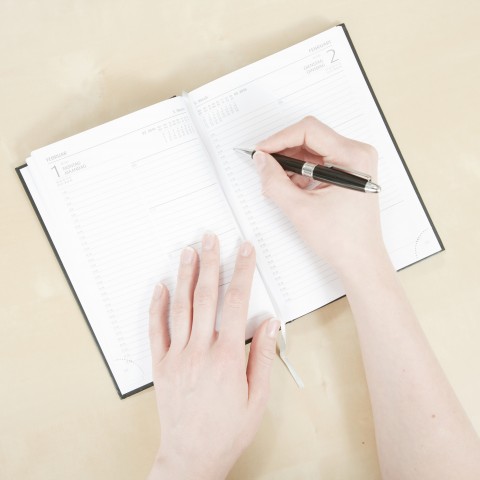
C- Tips on How to Take the Test
- ► First, read the Dutch test instructions very carefully to understand them fully.
► Remember that you’ll probably not be asked for your opinion, and will sometimes be asked to take a stand following some specific guidelines. Follow these guidelines and write accordingly.
► Adapt your text for the target audience. The style, writing, and structure must match the type of text that you’re writing.
► Make a quick outline of your text before you begin writing. This way, you can write a better-organized text.
► Re-read your text several times, focusing on grammar, conjugation, and punctuation.
► Use a dictionary, it’s allowed! You may use a maximum of three dictionaries during the writing exam (except for the Van Dale Synonyms dictionary, the Van Dale Proverb dictionary, a digital dictionary, or a digital spell checker). Your dictionaries should not contain any notes.
2- The Speaking Test
Duration: around 25 minutes
A- The Test
For this Dutch speaking exam, you’ll wear headphones and speak through your microphone to the computer. You’ll read the commands and answers on the computer screen. The Program I exam consists of two parts; The Program II exam consists of three parts. There are both short and long speaking assignments:
- Short speaking assignment – You’ll receive questions, to which you’ll give a short answer. You’ll have twenty seconds to speak per assignment.
- Medium-length speaking assignment – You’ll receive questions, to which you’ll have to give a longer answer (a few sentences or more). You’ll have thirty seconds to speak per assignment.
- Long speaking assignment – You’ll speak for two minutes on a specific topic, and will receive preparation time for this.
| Program I | Program II | |
| Part 1 | 8 short speaking assignments | 4 short speaking assignments |
| Part 2 | 8 medium speaking assignments | 8 medium speaking assignments |
| Part 3 | – | 1 long speaking assignment |
- → You can’t use a dictionary for the speaking test!
B- Tips on How to Practice for the Test
- ► Take some old NT2 tests and practice the short, medium, and (if you plan on taking the Program II) long speaking assignments. This is the best way to get familiar with the “real” test conditions.
► Practice your speaking skills with Dutch natives as often as you can. Practice with your Dutch friends or colleagues. Don’t have any yet? Talking to strangers also helps a lot; it gets you out of your comfort zone and exposes you to different ways of speaking.
► Don’t have any natives around to talk with? Try to practice with other Dutch learners, or even alone. If practicing alone, record yourself and try to correct your own mistakes.
- ► Would you like to improve your pronunciation? Then have a look at Our Ultimate Dutch Pronunciation Guide.
- ► Are you just learning Dutch? Have a look at this page on Conversational Dutch for Absolute Beginners.
- ► Use MyTeacher and send your recordings to your private teacher. He or she will give you some great feedback on your grammar and pronunciation!

C- Tips on How to Do the Test
- ► Read the Dutch test instructions carefully, as many times as necessary to understand them perfectly.
► Try to use examples to illustrate your ideas or opinions. You can use examples from your own experiences, current events, or texts that you’ve read.
► Try to articulate your thoughts clearly, and don’t scatter your ideas too much.
3- The Reading Test
Duration: 110 minutes in Program I and 100 minutes in Program II
A- The Test
For the Dutch reading exam, you’ll receive a booklet containing texts. The questions and answer options are on the computer. For the seven texts, you must answer 35-38 multiple-choice questions.
There are different types of assignments:
- There are assignments where you have to choose the subject of the text, the source, or the audience.
- There are assignments where you have to choose the meaning of a text, the relationship between two pieces of text, or the conclusion of the text.
- There are questions where you need to look something up in the text.
B- Tips on How to Practice for the Test
- ► Practice by reading a wide variety of materials, from newspaper articles, books, and essays to short stories.
► Practice the reading test from a past NT2 Dutch test. This way, you’ll get a good idea of what to expect in terms of length and difficulty. You can also have a look at NT2 Dutch test reviews.
- ► Are you still a Dutch language beginner? Then have a look at this Extensive Reading in Dutch for Absolute Beginners page or this Reading Comprehension for Absolute Beginners page.
C- Tips on How to Do the Test
- ► Read the text carefully before you read the questions. This way, you won’t be biased and you’ll be able to better understand the text.
- ► Then, read the Dutch test instructions and questions attentively and make sure you understand them perfectly. After that, you can read the text one more time in this new light.
► Stay alert and prepare yourself for word play and traps.
- ► You can use up to three dictionaries for the reading test, as long as they are free of any notes. You can’t use the Van Dale Synonyms dictionary, the Van Dale Proverb dictionary, a digital dictionary, or a digital spell checker.
4- The Listening Test
Duration: 90 minutes
A- The Test
The Dutch listening exam consists of about 40 different assignments. There are five or more audio texts and 1-3 videos, each with questions. All questions are multiple-choice.
You’ll hear speakers talk about daily life situations, in addition to recordings of “normal life conversations.” These will feature different voices, repetitions, accents, and noises in the background.
For each question, you get twenty-five seconds to read the question and the three possible answers.
You can’t use a dictionary for the listening test.
B- Tips on How to Practice for the Test
- ► Listen to Dutch radio or watch Dutch TV, movies, or series every day. A Dutch podcast may also be useful.
- ► Do you have some Dutch native speakers close by? Listen to them speak by asking them many questions.
► Any listening exercise on DutchPod101.com can be a great way to practice your listening skills. We also have a page on Listening Comprehension for Absolute Beginners.
- ► Practice an NT2 test with listening assignments; this way, you’ll know what to expect. You can find old NT2 Dutch State Exams on the official website, where you can also have a look at their recommended study materials.

C- Tips on How to Do the Test
- ► Read the test instructions attentively.
- ► Make the best of the short time you’re given to read the questions.
► Stay alert and don’t jump to conclusions too fast—appearances may be deceiving. Don’t choose your answer until you’ve heard the entire text.
4. How DutchPod101 Can Help You Learn More Dutch
In this guide, you’ve learned everything you need to know about the NT2 Dutch State Exam. We’ve shown you some useful information on the structure and the different levels of the test. You’ve also received some useful tips on the writing, speaking, reading, and listening sections of this Dutch language proficiency test.
Do you feel ready to start practicing for the NT2 Dutch Exam? A good exercise is to practice an official NT2 test, from the beginning to the end. It will take some time, but it’s the only way to learn what to expect.
Would you like to practice your Dutch? DutchPod101.com has many free resources, such as vocabulary lists with audio recordings which are great for practicing your listening and speaking skills.
Or do you prefer some private teaching? DutchPod101 also offers personal one-on-one coaching with our premium MyTeacher service. Through interactive exercises, personalized feedback, and useful tips, you can really master this Dutch language proficiency test!

The Top 10 Easy Dutch Sentence Patterns

Learning a new language can be tricky; there’s so much to learn. Where should you start? And what should you focus on?
You may already be learning grammar rules, memorizing conjugation tables, and studying vocabulary lists. However, to really learn Dutch, it’s important that you speak it as early as you can. That’s the only way you’ll really improve your Dutch language skills.
Are you still hesitant to speak Dutch? Then try to learn some useful and easy Dutch sentence patterns. This will allow you to form hundreds of natural sentences that you can use in many daily situations. You’ll be able to communicate your thoughts, doubts, or opinions to your Dutch friends or colleagues with ease and confidence. Sure, it won’t enable you to express the most complicated lines of thought, but it will cover a wide range of typical day-to-day interactions. Moreover, it will give you the confidence boost you need to start speaking Dutch.
In this article, you’ll learn ten easy Dutch sentence patterns, covering situations from giving a description to expressing your desires. For each of these Dutch-to-English sentence patterns, we’ll include many examples. This way you’ll really have the tools to master the Dutch sentence structure and sentence patterns.
Good luck!
 Table of Contents
Table of Contents
- Linking Two Nouns
- Using Adjectives to Describe Something
- Making a Comparison
- Expressing Your Desires
- Expressing Your Needs
- Expressing Your Preferences
- Giving Orders
- Asking for Information
- Asking About Time
- Asking About Location or Position
- How DutchPod101.com Can Help You Learn More Dutch
1. Linking Two Nouns

We’ll start with an easy Dutch sentence pattern that will allow you to link two nouns: the “A is B” pattern.
This can also be called the [A] [B] [C] pattern: A (noun/subject) + B (verb) + C (noun/object).
A noun (subject) is linked by a verb to a noun (object), giving substance to a sentence. The way to do this is to use the verb zijn (“to be”). You can find details about its conjugation right here.
Let’s have a look at some examples:
- Jan is mijn vriend. (“Jan is my friend.”)
- Charlotte was mijn baas. (“Charlotte was my boss.”)
- Mijn broer is politieagent. (“My brother is a police officer.”)
- Dit horloge is een cadeau van mijn vrouw geweest. (“This watch was a gift from my wife.”)
- Nederland is het land van mijn dromen. (“The Netherlands is the country of my dreams.”)
- → Would you like to learn some more nouns? Have a look at these 50 Most Common Nouns.
2. Using Adjectives to Describe Something
Okay, let’s continue with another basic Dutch sentence structure, similar to the one above. This sentence pattern has the same kind of structure (A is B). However, the verb zijn (“to be”) here doesn’t connect two nouns; instead, it connects a noun and an adjective.
So the pattern is: A (noun/subject) is B (adjective).
Let’s look at some examples:
- Marlies is mooi. (“Marlies is beautiful.”)
- Kai is heel jong. (“Kai is very young.”)
- Deze baan was erg belangrijk voor mij. (“This job was very important to me.”)
- Hij zou nu erg oud zijn geweest. (“He would have been very old now.”)
- De film die we gisteravond hebben bekeken was eng. (“The movie we watched last night was scary.”)
- → Learn more useful adjectives with DutchPod101’s list of the 50 Most Common Adjectives. Or have a look at “Which Adjective Describes Your Personality Best?”
3. Making a Comparison

Let’s take it one step further with this more complex (but still easy) Dutch sentence pattern: A is [adjective] than B.
Use this sentence pattern to make a comparison.
Let’s have a look at the different parts of this sentence pattern, that again is connected by the verb zijn (“to be”): A (noun/subject) + zijn (“to be”) + B (adjective in comparative form) + dan (“than”) + C (noun).
Let’s now see some examples of how to form Dutch sentences like this with the verb zijn:
- Ik ben mooier dan mijn zus. (“I am more beautiful than my sister.”)
- Mijn man was slimmer dan ik. (“My husband was smarter than me.”)
- Hij is grappiger dan mijn vader. (“He’s funnier than my dad.”)
- Nederland is leuker dan België. (“The Netherlands is nicer than Belgium.”)
- De vorige minister-president was beter dan de huidige. (“The previous prime minister was better than the current one.”)
However, you can also make comparisons with other verbs. For example:
- Mijn kat rent harder dan mijn hond. (“My cat runs faster than my dog.”)
- Hij loopt beter dan ik. (“He walks better than me.”)
- Deze achtbaan ging sneller dan de vorige. (“This roller coaster went faster than the last one.”)
- In Amsterdam praten ze duidelijker dan in Limburg. (“In Amsterdam, they talk more clearly than in Limburg.”)
4. Expressing Your Desires
Now let’s go another way and see a different kind of Dutch sentence structure.
Wouldn’t it be nice if you could express your desires in Dutch? To be able to say things like “I want to go to the bathroom” or “I want a sandwich with gouda cheese.” Crucial stuff to know in the Netherlands.

For this Dutch sentence pattern, we use the verb willen (“to want”), and it works quite similarly to how it does in English. It uses the indicative mood for something you WANT and the subjunctive mood for something you WOULD LIKE:
- Ik wil (“I want”)
- Ik zou willen (“I would like”)
This sentence structure follows the pattern:
A [object] + willen + B (noun)
or
A [object] + willen + B (noun) + C (verb)
For example:
- Ik wil koffie. (“I want coffee.”)
- Ik wil je zien. (“I want to see you”.)
- Mijn broer wil Nederland bezoeken. (“My brother wants to visit the Netherlands.”)
- Ik zou van de wc gebruik willen maken. (“I would like to use the toilet.”)
- Hij zou graag de hond willen aaien. (“He would like to pet the dog.”)
And let’s not forget “I don’t want,” as the Dutch have no problem at all saying what they don’t want…
- Ik wil geen fruit. (“I don’t want fruit.”)
- Ik zou niet naar Groningen willen verhuizen. (“I would not want to move to Groningen.”)
- → You can find the full conjugation table for willen right here.
5. Expressing Your Needs

Let’s add some urgency and learn one of the most important Dutch sentence structures: how to express your needs. This is something you’re likely to do daily, on a variety of occasions: at work (Ik heb meer tijd nodig – “I need more time”), at home (Ik moet de vaat nog wassen – “I need to wash the dishes”) or with friends (Ik heb echt een biertje nodig – “I really need a beer”).
As you can see in these examples, there are different ways in Dutch to express your needs:
- Moeten (“To have to”)
| Ik moet + Infinitive verb | Ik moet plassen. (“I have to pee.”) |
- Nodig hebben (“To need to”)
| Ik heb + Nominal + nodig | Ik heb jou nodig. (“I need you.”) |
Here are some more Dutch sentence examples:
- Ik heb rust nodig. (“I need to rest.”)
- Ik moet met je praten. (“I need to talk to you.”)
- Ik heb een nieuwe jas nodig. (“I need a new jacket.”)
- We hadden gisteren jouw hulp nodig. (“We needed your help yesterday.”)
- Zij moesten vorige week onverwachts naar Duitsland reizen. (“They had to travel to Germany unexpectedly last week.”)
6. Expressing Your Preferences
You’ve expressed your desires and needs, now it’s time to talk about the things that you like or even love…
Just like in English, we have a verb for “to like” (leuk vinden) and a verb for “to love” (houden van). In general, the Dutch are quite careful with their expressions of love; it’s quickly seen as dramatic or overdone to use this word. However, if you really like something or someone, you can use it, of course.

- Leuk vinden (“To like [to]”)
| Ik vind + Nominal + leuk | Ik vind mijn collega leuk. (“I like my colleague.”) |
| Ik vind + Infinitive verb + leuk | Ik vind tekenen leuk. (“I like to draw.”) |
- Houden van (“To love [to]”)
| Ik houd van + Nominal or Noun | Ik houd van jou. (“I love you.”) |
| Ik houd van + Infinitive verb | Ik houd van fietsen. (“I love to bike.”) |
Let’s have a look at some examples:
- Ik vind deze film leuk. (“I like this movie.”)
- Ik vind je leuk. ( “I like you.”)
- Mijn vader houdt veel van mijn moeder. (“My father loves my mother a lot.”)
- De kinderen hielden vroeger van buiten spelen. (“In the past, the children loved playing outside.”)
- Ik vind bier lekker, maar ik houd meer van wijn. (“I like beer, but I prefer wine.” Literally: “I love wine more.”)
7. Giving Orders
Would you like to get bossy in Dutch? Or just be able to express your limits? Then you need this sentence pattern with the Dutch imperative. For this, we use the present tense of the first person singular. However, in the case of regular verbs, the imperative is the verb stem.
This is the sentence pattern: A (imperative verb) + niet (+ B [noun]). In English, this means: Don’t + A (conjugated verb).
Let’s see this Dutch sentence construction in action:
- Ga niet weg! (“Don’t go away!”)
- Lach niet. (“Don’t laugh.”)
- Wees niet onbeleefd. (“Don’t be rude.”)
- Vertel me niet wat ik moet doen. (“Don’t tell me what to do.”)
- Doe de deur niet dicht. (“Don’t close the door.”)
- → When you’re angry, it’s always good to know how to give negative orders. However, you should also look at these Phrases to Use When You’re Angry.
8. Asking for Information

Let’s now move on to some questions. Especially as a foreigner, it’s so important to be able to ask basic questions; you need to know how to ask for information. So what’s an easy way to do this in Dutch?
- Wat + zijn + A (noun)? (“What + to be + A [noun]?”)
As you can see, it’s quite similar to its English counterpart. Let’s see a few examples of this Dutch language sentence structure:
- Wat is dat? (“What is this?”)
- Wat is jouw naam? (“What is your name?”)
- Wat was haar beroep? (“What was her profession?”)
- Wat was het gerecht dat we de vorige keer aten? (“What was the dish we ate last time?”)
- Wat zou je ideale feest zijn geweest? (“What would have been your ideal party?”)
In the sentences above, note the conjugation of the verb zijn (“to be”).
9. Asking About Time
After the “what” questions, it’s time to look at the “when” questions:
- Wanneer + zijn + A (noun)? (“When + to be + A [noun]?”)
This Dutch sentence pattern is also quite similar to the English version. The zijn (“to be”) conjugation is also crucial for this question. Let’s see some examples:
- Wanneer is je verjaardag? (“When is your birthday?”)
- Wanneer is de vergadering? (“When is the meeting?”)
- Wanneer was jouw feest? (“When was your party?”)
- Wanneer was je boos op je zus? (“When were you angry with your sister?”)
- Wanneer zou jouw trein aankomen? (“When would your train arrive?”)
- → Would you like to learn more about the vocabulary for the days in Dutch? Have a look at this useful vocabulary list on Talking About Days with audio recordings.
10. Asking About Location or Position
Last, but definitely not least, a very useful Dutch sentence pattern is that for asking “where” questions.
These are crucial for when you get lost and need to ask for directions, or when you just want to socialize with someone and ask them where in the Netherlands they’re from:
- Waar + zijn + A (noun)? (“Where + to be + A [noun]?”)
This question can also use different conjugations of the verb zijn (“to be”):
- Waar is dat? (“Where is that?”)
- Waar is de wc? (“Where is the toilet?”)
- Waar was ik gebleven? (“Where was I?”)
- Waar ben jij geboren? (“Where were you born?”)
- Waar ben jij het liefste op jouw verjaardag? (“Where do you prefer to be on your birthday?”)
- → Want to see more Dutch-to-English sentence patterns? Make sure to visit our vocabulary list on the Top 10 Sentence Patterns for Beginners, with useful audio recordings to improve your pronunciation.
11. How DutchPod101.com Can Help You Learn More Dutch
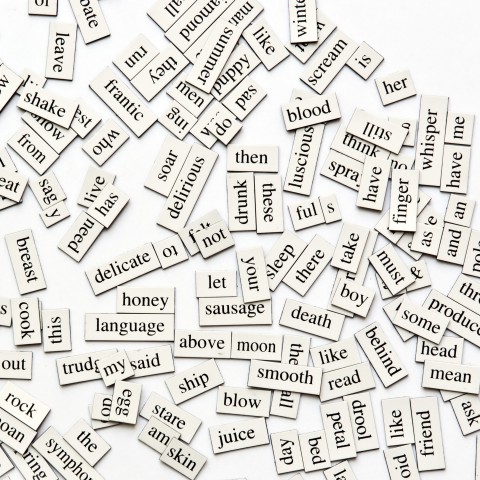
You’ve just learned the top ten Dutch sentence patterns. You can use these patterns to form sentences for just about any situation!
Are you ready to put this knowledge into practice? Do you feel like speaking in Dutch to complete strangers using these Dutch sentence patterns?
Make sure to explore DutchPod101.com, as we have many free resources that will help you form perfect sentences. Have a look at our vocabulary lists with audio recordings; they’re a great way to practice Dutch words and their pronunciation.
Remember that DutchPod101 also offers personal one-on-one coaching with our premium MyTeacher service. This way, you can practice the Dutch sentence structures with your own private teacher, through interactive exercises, personalized feedback, and much more.
Happy learning!

List of the 100 Must-Know Dutch Adverbs

Adverbs bring some clarity, fun, and emotion to a language. Could you imagine a language without them? It would surely make everything much more ambiguous and boring. We need adverbs to form phrases, to express our emotions, to give some perspective, and to spice up our conversations.
Luckily, there are plenty of Dutch adverbs to choose from. From adverbs describing time and frequency, to those useful adverbs that help you connect your thoughts. Through these fun adverbs, you’ll be able to explain yourself better and more clearly express your mood, opinions, and feelings.
Are you already intrigued? Then let’s start with a short guide on the use of Dutch adverbs. After this, we’ll continue with a useful Dutch adverbs list with 100 must-know adverbs. Enjoy!
 Table of Contents
Table of Contents
- Dutch Adverbs User Guide
- Adverbs of Time
- Adverbs of Frequency
- Adverbs of Place
- Adverbs of Manner
- Adverbs of Degree
- Adverbs to Connect Thoughts
- How DutchPod101 Can Help You Learn More Dutch
1. Dutch Adverbs User Guide
1- What are Adverbs?
Adverbs give more information about the words they’re connected to. They work together with a verb, an adjective, or another adverb, to change its meaning or to make its meaning more precise. Adverbs can change the tone of the sentence completely or set another mood.
So let’s show you some examples to help you understand the Dutch grammar of adverbs:
Combination of an adverb and a verb:
- Ik ga morgen naar school. (“I will go to school tomorrow.”)
Here, the adverb morgen (“tomorrow”) defines the verb gaan (“to go”).
Combination of Dutch adjectives and adverbs:
- Ik ben zeer goed in het leren van talen. (“I am very good at learning languages.”)
The Dutch adverb zeer (“very”) influences the word goed, which is an adjective.
- →Learn more about the difference between adverbs and adjectives.
- →Would you like to learn more Dutch adjectives? Have a look at this list of the 50 Most Common Adjectives. Want to take it a step further? Let’s have some fun and see Which Adjective Describes Your Personality Best.
Combination of an adverb with another adverb:
- Later deze week reis ik naar Nederland. (“Later this week, I travel to the Netherlands.”)
Here, you can see how the adverb later (“later”) and the adverb deze week (“this week”) define each other.

2- Dutch Adverb Order
For the Dutch adverb placement, it’s very common to place the adverb as closely as possible after the verb. For example:
- Ik spreek zachtjes. (“I speak softly.”)
However, if you’d like to emphasize the adverb, you can put it at the beginning of the sentence:
- Bovendien, heb ik al plannen. (“Moreover, I already have plans.”)
Do you want to use more than one adverb? Then the following Dutch adverb placement is most common:
Time-Manner-Place
So adverbs of time come before adverbs of manner, and adverbs of manner come before adverbs of place.
Now that you’ve learned something about the Dutch grammar of adverbs, let’s start with our Dutch adverbs list and dive into the different adverbs. In the following sections, we’ll be covering adverbs in Dutch related to time, frequency, place, manner, degree, and those special thought connectors.
2. Adverbs of Time
Adverbs of time will tell you when something takes place.

1.
| Gisteren “Yesterday” | Gisteren was ik erg moe. “Yesterday, I was very tired.” |
2.
| Deze week “This week” | Deze week begin ik met mijn nieuwe baan. “This week, I start with my new job.” |
3.
| Straks “Later” | Ik bel je straks. “I’ll call you later.” |
4.
| Vandaag “Today” | Mijn zus gaat vandaag trouwen. “My sister gets married today.” |
5.
| Morgen “Tomorrow” | Ik kan niet werken morgen. “I can’t work tomorrow.” |
6.
| Dan “Then” | Hij komt dan naar huis. “He then comes home.” |
7.
| Later “Later” | Later als ik groot ben… “Later, when I grow up…” |
8.
| Vanavond “Tonight” | Ik heb een date vanavond. “I have a date tonight.” |
9.
| Nu “Right now” | Kom nu naar huis. “Come home right now.” |
10.
| Gisteravond “Last night” | Gisteravond gingen we laat slapen. “Last night we went to bed late.” |
11.
| Vanmorgen “This morning” | Vanmorgen kon ik mijn bed niet uit komen. “This morning, I couldn’t get out of bed.” |
12.
| Volgende week “Next week” | Volgende week reizen we naar Amsterdam. “Next week, we will travel to Amsterdam.” |
13.
| Al “Already” | Ik wacht al een uur op je. “I’ve already been waiting for you for an hour.” |
14.
| Onlangs “Recently” | Ik ben onlangs oma geworden. “I recently became a grandmother.” |
15.
| De laatste tijd “Lately” | De laatste tijd kan ik niet goed slapen. “Lately, I can’t sleep very well.” |
16.
| Snel “Soon” | Ik zie je snel. “I will see you soon.” |
17.
| Meteen “Immediately” | Ik duik meteen in het zwembad. “I immediately dive into the pool.” |
18.
| Nog “Still” | Hij is nog aan het bellen. “He is still calling.” |
19.
| Nog steeds “Still” | Ik ben nog steeds verliefd op jou. “I am still in love with you.” |
As you can see, nog and nog steeds both mean “still.” However, nog steeds in general refers to a longer time, so something that continues over a longer time period.
20.
| Geleden “Ago” | Zeven jaar geleden ging ik naar Argentinië. “Seven years ago, I went to Argentina.” |
- →Make sure to visit our vocabulary list on Talking about Time and discover the pronunciation of various Dutch adverbs of time.
3. Adverbs of Frequency
Adverbs of frequency will give you some information on how often something takes place.
21.
| Bijna “Almost” | Ik ga bijna nooit uit eten. “I almost never eat out.” |
22.
| Altijd “Always” | Zaterdag ga ik altijd winkelen. “I always go shopping on Saturday.” |
23.
| Vaak “Often” | Hij is vaak boos. “He is often angry.” |
24.
| Gewoonlijk “Usually” | Ik werk gewoonlijk tot zes uur. “Usually, I work until six.” |
25.
| Soms “Sometimes” | Ik kijk soms het nieuws. “I sometimes watch the news.” |
26.
| Af en toe “Occasionally” | Mijn vriend en ik gaan af en toe naar de bioscoop. “My boyfriend and I occasionally go to the movies.” |
27.
| Zelden “Rarely” | Mijn broer reist zelden met de auto. “My brother rarely travels by car.” |
28.
| Nooit “Never” | Ik ga nooit trouwen. “I will never get married.” |
29.
| Ooit “Someday” | Ooit wil ik graag de wereld over reizen. “Someday, I want to travel all over the world.” |
30.
| Meestal “Usually” | Ik ben meestal wel thuis. “I’m usually at home.” |
31.
| Bijna nooit “Almost never” | Ze liegt bijna nooit tegen me. “She almost never lies to me.” |
32.
| Regelmatig “Regularly” | Hij gaat regelmatig voetballen. “He plays football regularly.” |
4. Adverbs of Place

Adverbs of place tell you more about where something takes place.
33.
| Hier “Here” | Kom hier! “Come here!” |
34.
| Daar “There” | Ik ga daar niet naartoe. “I’m not going there.” |
35.
| Daarginds “Over there” | Daarginds woont mijn moeder. “My mother lives over there.” |
36.
| Overal “Everywhere” | Er zijn overal camera’s. “There are cameras everywhere.” |
37.
| Nergens “Nowhere” | De hond is nergens te vinden. “The dog is nowhere to be found.” |
38.
| Thuis “Home” | Hij is thuis. “He is at home.” |
39.
| Buiten “Outside” | Ik zit buiten. “I’m sitting outside.” |
40.
| Binnen “Inside” | Binnen is het lekker warm. “Inside, it’s nice and warm.” |
41.
| Ergens “Somewhere” | De sleutels liggen ergens in de la. “The keys are somewhere in the drawer.” |
5. Adverbs of Manner
How does something happen? That’s what the adverbs of manner describe.
42.
| Nogal “Quite” | Ze was nogal boos. “She was quite mad.” |
43.
| Echt “Really” | Hij is echt geschrokken. “He is really shocked.” |
44.
| Snel “Quickly” | De man rijdt snel naar huis. “The man drives home quickly.” |
45.
| Voorzichtig “Carefully” | Ik maak de kast voorzichtig open. “I carefully open the cupboard.” |
46.
| Langzaam “Slowly” | Langzaam fietsen we door de sneeuw. “Slowly, we cycle through the snow.” |
47.
| Goed “Well” | Het gaat goed met mij. “I am doing well.” |
48.
| Hard “Fast” | Hij fietst hard door de bossen. “He cycles fast through the woods.” |
49.
| Liefdevol “Lovingly” | Ze kijkt liefdevol naar haar vriendje. “She looks lovingly at her boyfriend.” |
50.
| Nauwelijks “Hardly” | Ik kan je nauwelijks bijhouden. “I can hardly keep up with you.” |
51.
| Merendeels “Mostly” | De zoon woont merendeels bij zijn moeder. “The son mostly lives with his mother.” |
52.
| Samen “Together” | Wij gaan samen winkelen. “We go shopping together.” |
53.
| Alleen “Alone” | Ik ben niet graag alleen. “I don’t like to be alone.” |
54.
| Stom “Stupidly” | Hij lachte stom om haar flauwe grap. “He laughed stupidly at her silly joke.” |
55.
| Slecht “Badly” | Ik dans slecht. “I dance badly.” |
56.
| Mooi “Beautifully” | De vrouw zingt mooi. “The woman sings beautifully.” |
57.
| Kwaad “Angrily” | Hij liep kwaad weg. “He walked away angrily.” |
6. Adverbs of Degree
Adverbs of degree tell you to what extent something happens or is true.

58.
| Heel “Very” | Onze hond is heel lief. “Our dog is very sweet.” |
59.
| Erg “Very” | Ik ben erg gelukkig met jou. “I am very happy with you.” |
60.
| Zeer “Very” | Ik vind mijn studie zeer interessant. “I find my study very interesting.” |
As you can see, there are (at least) three different ways to say “very” in Dutch. Heel and erg are the most common ones. Zeer is a more serious way of saying “very.”
61.
| Helemaal “Completely” | Hij eet zijn bord helemaal leeg. “He eats his plate completely empty.” |
62.
| Graag “Like” / “Gladly” | Zij wil graag met hem trouwen. “She would like to marry him.” |
63.
| Redelijk “Quite” | Het is al redelijk laat. “It is already quite late.” |
64.
| Vrij “Quite” | Ik ben vrij moe. “I am quite tired.” |
65.
| Absoluut “Absolutely” | Hij kan absoluut het beste koken. “He can definitely (absolutely) cook the best.” |
66.
| Veel “A lot” | In de doos zitten veel bloemen. “There are a lot of flowers in the box.” |
67.
| Weinig “Not much” | Ik zie hem weinig. “I don’t see him much.” |
68.
| Min of meer “More or less” | Ik ga min of meer twee keer per jaar op vakantie. “I go on holiday twice a year, more or less.” |
69.
| Genoeg “Enough” | Dat is genoeg. “That’s enough.” |
70.
| Nauwelijk “Hardly” | Je kunt het nauwelijks zien. “You can hardly see it.” |
71.
| Een beetje “A bit” | Ik ben een beetje teleurgesteld in jou. “I am a bit disappointed in you.” |
72.
| Wat “Something” | Ik heb zeker wat geleerd van mijn Nederlandse les. “I definitely learned something from my Dutch class.” |
73.
| Niets “Nothing” | Ik heb niets verkeerd gedaan. “I have done nothing wrong.” |
74.
| Minder “Less” | Hij is minder grappig. “He is less funny.” |
75.
| Onvoldoende “Not enough” | Ik heb onvoldoende gestudeerd. “I have not studied enough.” |
- →Learn How to Express Quantity with DutchPod101.com and have a look at which words are adverbs (see the words with “adv”).
7. Adverbs to Connect Thoughts
Some adverbs help you connect thoughts. With these, you’ll be able to form sentences and express opinions.
76.
| Ook “Also” | Ik ben ook moe. “I am also tired.” |
77.
| Natuurlijk “Of course” | Hij is natuurlijk weer te laat. “He is, of course, too late again.” |
78.
| Echter “However” | Ik ben echter wel benieuwd. “However, I am curious.” |
79.
| Daarom “Therefore” | Daarom ga ik vandaag naar de dokter. “Therefore, I am going to the doctor today.” |
80.
| Aan de andere kant “On the other hand” | Aan de andere kant wil zij liever vrij zijn. “On the other hand, she would rather be free.” |
81.
| Ongetwijfeld “Undoubtedly” | Mexicaans eten is ongetwijfeld heel lekker. “Mexican food is undoubtedly very tasty.” |
82.
| In feite “In fact” | In feite is het helemaal niet zo ingewikkeld. “In fact, it’s not that complicated at all.” |
83.
| Eindelijk “Finally” | Ik studeer vandaag eindelijk af. “I’m finally graduating today.” |
84.
| Niettemin “Nevertheless” | Niettemin zal ik proberen vandaag plezier te hebben. “Nevertheless, I will try to have fun today.” |
85.
| Inderdaad “Indeed” | Het is inderdaad een uitdaging. “It is indeed a challenge.” |
86.
| In plaats van “Instead” | Zij kiest voor hem in plaats van haar beste vriendin. “She chooses him instead of her best friend.” |
87.
| Bovendien “Moreover” | Ik ga bovendien al over 2 dagen op vakantie. “Moreover, I will go on holiday in two days.” |
88.
| Ondertussen “Meanwhile” | Zij is ondertussen al getrouwd. “Meanwhile, she already got married.” |
89.
| Uiteindelijk “Eventually” / “In the end” | Uiteindelijk hebben ze gekozen voor iets nieuws. “In the end, they opted for something new.” |
90.
| Trouwens “Besides” / “By the way” | Trouwens, wist je al dat Bob en Kim uit elkaar zijn? “By the way, did you know Bob and Kim separated?” |
91.
| Zeker “Certainly” | Zij is zeker heel mooi. “She is certainly very beautiful.” |
92.
| Daarbij “In addition” | Daarbij ga ik graag naar school. “In addition, I like to go to school.” |
93.
| Niet “Not” | Dat is niet grappig. “That’s not funny.” |
94.
| Misschien “Maybe” | Ik ben misschien wel wat voorbarig geweest. “I was maybe a bit presumptuous.” |
95.
| Helaas “Unfortunately” | Helaas kan ik je niet verder helpen. “Unfortunately, I can’t help you further.” |
96.
| Eigenlijk “Actually” | Ik ben eigenlijk wel opgelucht. “Actually, I’m relieved.” |
97.
| Toch “Anyway” | Zij gaat toch naar huis. “She’s going home anyway.” |
98.
| Hè? “Huh?” | Dat vind je wel leuk, hè? “You like that, huh?” |
Hè is a common Dutch catchword, and it’s a popular way to end a question.

99.
| Zeg “Say” | Dat heeft ze goed gedaan, zeg. “She did well, I say.” |
Zeg means “say,” and it’s usually used to put emphasis on something said before.
100.
| Blijkbaar “Apparently” | Blijkbaar is zij verliefd op hem. “Apparently, she is in love with him.” |
- →Would you like to learn the pronunciation of some of the Adverbs and Phrases for Connecting Thoughts? Have a look here and practice your pronunciation with the audio recordings. It’s freely available on DutchPod101.com.
8. How DutchPod101 Can Help You Learn More Dutch
In this guide, we’ve shown you the ins and outs of Dutch adverbs: Dutch adverb order, Dutch adverb placement in sentences, and a massive Dutch adverbs list. In our list of the 100 most useful Dutch adverbs, you learned all about the Dutch grammar of adverbs as well.
Are you ready now to take this new knowledge into your daily life? Are you ready to put these adverbs into practice? To do this, you need to be able to form sentences with Verbs and Pronouns.
Would you like some special attention? Remember that we also offer a Premium PLUS service with personal one-on-one coaching: MyTeacher. Let your private teacher help you with Dutch adjectives and adverbs, verbs, pronunciation, and much more. You’ll receive personalized exercises, constructive feedback, and interactive assignments.
Happy learning on DutchPod101.com!

Dutch Keyboard: How to Install and Type in Dutch

You asked, so we provided—easy-to-follow instructions on how to set up your electronic devices to write in Dutch! We’ll also give you a few excellent tips on how to use this keyboard, as well as some online and app alternatives if you prefer not to set up a Dutch keyboard.
 Table of Contents
Table of Contents- Why it’s Important to Learn to Type in Dutch
- Setting up Your Computer and Mobile Devices for Dutch
- How to Activate an Onscreen Keyboard on Your Computer
- How to Change the Language Settings to Dutch on Your Computer
- Activating the Dutch Keyboard on Your Mobile Phone and Tablet
- Dutch Keyboard Typing Tips
- How to Practice Typing Dutch
1. Why it’s Important to Learn to Type in Dutch

Learning a new language is made so much easier when you’re able to read and write/type it. This way, you will:
- Get the most out of any dictionary and Dutch language apps on your devices
- Expand your ability to find Dutch websites and use the various search engines
- Be able to communicate much better online with your Dutch teachers and friends, and look super cool in the process!
2. Setting up Your Computer and Mobile Devices for Dutch
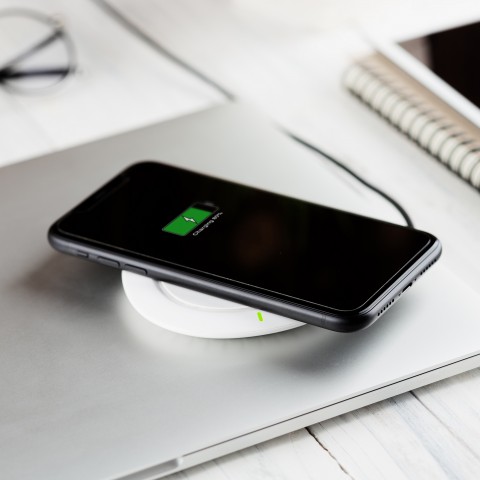
It takes only a few steps to set up any of your devices to read and type in Dutch. It’s super-easy on your mobile phone and tablet, and a simple process on your computer.
On your computer, you’ll first activate the onscreen keyboard to work with. You’ll only be using your mouse or touchpad/pointer for this keyboard. Then, you’ll need to change the language setting to Dutch, so all text will appear in Dutch. You could also opt to use online keyboards instead. Read on for the links!
On your mobile devices, it’s even easier—you only have to change the keyboard. We also provide a few alternatives in the form of online keyboards and downloadable apps.
3. How to Activate an Onscreen Keyboard on Your Computer
1- Mac
1. Go to System Preferences > Keyboard.
2. Check the option “Show Keyboard & Character Viewers in Menu Bar.”
3. You’ll see a new icon on the right side of the main bar; click on it and select “Show Keyboard Viewer.”

2- Windows
1. Go to Start > Settings > Easy Access > Keyboard.
2. Turn on the option for “Onscreen Keyboard.”
3- Online Keyboards
If you don’t want to activate your computer’s onscreen keyboard, you also have the option to use online keyboards. Here are some good options:
4- Add-ons of Extensions for Browsers
Instead of an online keyboard, you could also choose to download a Google extension to your browser for a language input tool. The Google Input Tools extension allows users to use input tools in Chrome web pages, for example.
4. How to Change the Language Settings to Dutch on Your Computer

Now that you’re all set to work with an onscreen keyboard on your computer, it’s time to download the Dutch language pack for your operating system of choice:
- Windows 8 (and higher)
- Windows 7
- Mac (OS X and higher)
1- Windows 8 (and higher)
1. Go to Settings > Change PC Settings > Time & Language > Region & Language.
2. Click on “Add a Language” and select “Dutch.” This will add it to your list of languages. It will appear as Dutch with the note “language pack available.”
3. Click on “Dutch” > “Options” > “Download.” It’ll take a few minutes to download and install the language pack.
4. As a keyboard layout, you’ll only need the one marked as “Dutch.” You can ignore other keyboard layouts.
2- Windows 7
1. Go to Start > Control Panel > Clock, Language, and Region.
2. On the “Region and Language” option, click on “Change Keyboards or Other Input Methods.”
3. On the “Keyboards and Languages” tab, click on “Change Keyboards” > “Add” > “Dutch.”
4. Expand the option of “Dutch” and then expand the option “Keyboard.” Select the keyboard layout marked as “Dutch.” You can ignore other keyboard layouts. Click “OK” and then “Apply.”
3- Mac (OS X and higher)
If you can’t see the language listed, please make sure to select the right option from System Preferences > Language and Region
1. From the Apple Menu (top left corner of the screen) go to System Preferences > Keyboard.
2. Click the Input Sources tab and a list of available keyboards and input methods will appear.
3. Click on the plus button, select “Dutch,” and add the “Dutch” keyboard (not the “Belgian” one).
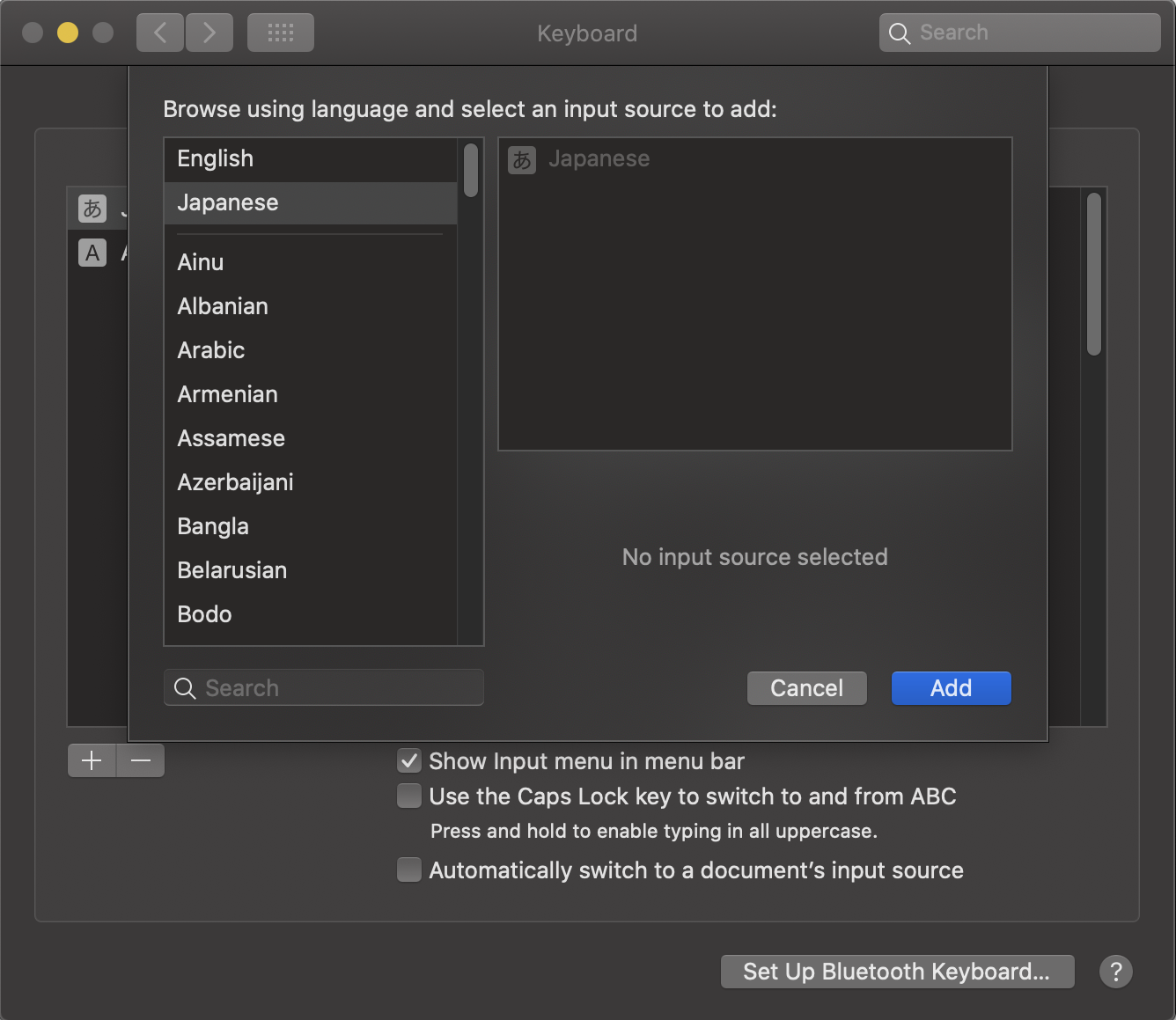
5. Activating the Dutch Keyboard on Your Mobile Phone and Tablet
Texting and searching in Dutch will greatly help you master the language! Adding a Dutch keyboard on your mobile phone and/or tablet is super-easy.
You could also opt to download an app instead of adding a keyboard. Read on for our suggestions.
Below are the instructions for both iOS and Android mobile phones and tablets.
1- iOS
1. Go to Settings > General > Keyboard.
2. Tap “Keyboards” and then “Add New Keyboard.”
3. Select “Dutch” from the list.
4. When typing, you can switch between languages by tapping and holding on the icon to reveal the keyboard language menu.
2- Android
1. Go to Settings > General Management > Language and Input > On-screen Keyboard (or “Virtual Keyboard” on some devices) > Samsung Keyboard.
2. Tap “Language and Types” or “ + Select Input Languages” depending on the device and then “MANAGE INPUT LANGUAGES” if available.
3. Select “Dutch” from the list.
4. When typing, you can switch between languages by swiping the space bar.
3- Applications for Mobile Phones
If you don’t want to add a keyboard on your mobile phone or tablet, these are a few good apps to consider:
6. Dutch Keyboard Typing Tips
Typing in Dutch can be very challenging at first! Therefore, we added here a few useful tips to make it easier to use your Dutch keyboard.

1- Computer
You can use Alt codes to enter specific characters. Here are some examples that are useful when using a Microsoft Windows device:
| Grave (capital letters) | À 0192 | È 0200 | Ì 0204 | Ò 0210 | Ù 0217 | — |
| Grave | à 0224 | è 0232 | ì 0236 | ò 0242 | ù 0249 | — |
| Acute (capital letters) | Á 0193 | É 0201 | Í 0205 | Ó 0211 | Ú 0218 | Ý 0221 |
| Acute | á 0225 | é 0233 | í 0237 | ó 0243 | ú 0250 | ý 0253 |
| Circumflex (capital letters) | Â 0194 | Ê 0202 | Î 0206 | Ô 0212 | Û 0219 | — |
| Circumflex | â 0226 | ê 0234 | î 0238 | ô 0244 | û 0251 | — |
| Tilde (capital letters) | Ã 0195 | — | — | Õ 0213 | — | — |
| Tilde | ã 0227 | — | — | õ 0245 | — | — |
| Umlaut (capital letters) | Ä 0196 | Ë 0203 | Ï 0207 | Ö 0214 | Ü 0220 | Ÿ 0159 |
| Umlaut | ä 0228 | ë 0235 | ï 0239 | ö 0246 | ü 0252 | ÿ 0255 |
When using a macOS, the Alt key changes into the Option key and the combinations change as well. For more information, check the Alt key page on Wikipedia.
2- Mobile Phones
On mobile devices, the process is much simpler. Just hold the vowel key and select the type of accentuation from the menu that pops up!
7. How to Practice Typing Dutch
As you probably know by now, learning Dutch is all about practice, practice, and more practice! Strengthen your Dutch typing skills by writing comments on any of our lesson pages, and our teacher will answer. If you’re a DutchPod101 Premium PLUS member, you can directly text our teacher via the My Teacher app—use your Dutch keyboard to do this!

Beginner’s Guide to Dutch Verb Conjugation

Why is it so important to study Dutch verb conjugation? Verbs are a crucial aspect of any language, and Dutch is no exception. But to be able to use verbs well, you have to understand their conjugation. What verb form should you use, when and why?
First, it’s important to understand the concept of conjugation and how it influences the Dutch language. After that, you can proceed to learning the different types of Dutch verbs. And with that information, you’ll have the tools to start understanding Dutch verb conjugation.
Conjugation is a basic skill that you need to really understand the Dutch language. But don’t panic; we’re here to help you. In this Beginner’s Guide, we’ll take you by the hand and explain everything you need to know about Dutch verb conjugation.
Is making Dutch sentences still a challenge for you? Then have a look at our Top 10 Sentence Patterns for Beginners.
 Table of Contents
Table of Contents
- What is Conjugation?
- The Five Types of Verbs
- Present Simple
- Past Simple
- The Present & Past Perfect
- Future Simple
- Future Perfect
- Conditional
- How DutchPod101 Can Help You Learn More Dutch
1. What is Conjugation?

| Dutch verb conjugation defines how the verbs change depending on the person, the number of subjects, the politeness level, and the tense. |
Okay, but what does that mean? Let’s give you some examples.
1- Persons, number of subjects, and politeness level
| 1st person singular | ik | “I” |
| 2nd person singular | jij / u | “you” (casual) / “you” (formal) |
| 3rd person singular | hij / zij | “he” / “she” |
| 1st person plural | wij | “we” |
| 2nd person plural | jullie | “you” |
| 3rd person plural | zij | “they” |
Quite similarly to English, Dutch regular verbs don’t change with every different person. However, irregular verbs are a different story.
For example, the irregular verb zijn (“to be”) in present tense:
- Ik ben (“I am”)
- Hij is (“He is”)
- U/Jij bent (“You are” formal/casual)
- Wij zijn (“We are”)
- Jullie zijn (“You are”)
- Zij zijn (“They are”)
As you can see, the Dutch verb conjugation also changes because of the number of subjects (for example, see the difference between “you” and “they”).
The politeness level doesn’t have such a big influence on the Dutch language, unless you use hebben (“to have”) in the present tense. Take a look at this brief Dutch conjugation table:
| Dutch conjugation of hebben (“to have”) | Jij hebt (“you have” casual) | U heeft (“you have” formal) |
2- The Dutch verb tenses
The Dutch language has two main tenses: the present simple and the past simple. Besides these two tenses, there are also some “semi-tenses.” The six semi-tenses appear when the present or past tense interacts with an aspect (temporary or continuing) or a mood (factual or hypothetical).
Thus, the Dutch language has, in total, eight tenses. Each one has a different use:
| The eight tenses of the regular verb praten (“to talk”) | |||
|---|---|---|---|
| 1. Onvoltooid Tegenwoordige Tijd (“Present Simple”) | Used to describe something that is happening now. | Ik praat. | “I talk.” |
| 2. Onvoltooid Verleden Tijd (“Past Simple”) | Used to describe a situation that happened in the past. | Ik praatte. | “I talked.” |
| 3. Voltooid Tegenwoordige Tijd (“Present Perfect”) | Used to describe something that happened in the past and has already ended. | Ik heb gepraat. | “I have talked.” |
| 4. Voltooid Verleden Tijd (“Past Perfect”) | Used to describe an action or event that happened in the past and ended in the past. | Ik had gepraat. | “I had talked.” |
| 5. Onvoltooid Tegenwoordige Toekomende Tijd (“Future Simple”) | Used to talk about something that will happen in the future. | Ik zal praten. | “I will talk.” |
| 6. Voltooid Tegenwoordige Toekomende Tijd (“Future Perfect”) | Used to describe an action that will have been completed before another action in the future. | Ik zal hebben gepraat. | “I will have talked.” |
| 7. Onvoltooid Verleden Toekomende Tijd (“Conditional”) | Used in a “what if” scenario; used to speculate about something. | Ik zou praten. | “I would talk.” |
| 8. Voltooid Verleden Toekomende Tijd (“Conditional Perfect”) | Used to describe a future hypothetical situation in the past. | Ik zou hebben gepraat. | “I would have talked.” |
The Dutch verb praten is a regular (weak) verb, which makes the above exercise a bit easier. Let’s have a look at all of the five types of Dutch verbs.
2. The Five Types of Verbs

In the Dutch language, there exist five types of verbs:
- Irregular verbs
- Weak verbs of the T-class
- Weak verbs of the D-class
- Strong verbs
- Mixed verbs
1- Irregular verbs
Irregular verbs are difficult as they’re quite unpredictable. Unfortunately, several important Dutch verbs are irregular. We already showed this before with the irregular verb zijn (“to be”). Another example of Dutch irregular verbs conjugation is the Dutch hebben (“to have”) conjugation:
- Ik heb (“I have”)
- Jij hebt (“You have” casual)
- U heeft (“You have” formal)
- Hij heeft (“He has”)
- Wij hebben (“We have”)
- Jullie hebben (“You have”)
- Zij hebben (“They have”)
Some other irregular Dutch verbs are willen (conjugation in Dutch) and mogen (conjugation in Dutch).
2- Weak verbs of the T-class
Luckily, not everything is irregular in the Dutch language. A great example of this are the weak verbs.
Weak verbs are the most common type of verb in Dutch. They’re regular and end with -d or -t. Let’s first show you the Dutch weak verbs of the T-class; these always have a –t in the past tense:
| Fietsen (“to bike”) | Ik fiets (“I bike”) | Ik fietste (“I biked”) | Ik heb gefietst (“I have biked”) |
3- Weak verbs of the D-class
Let’s continue and have a look at the weak verbs of the D-class. These are regular verbs that always have a -d in the past tense:
| Redden (“to save”) | Ik red (“I save”) | Ik redde (“I saved”) | Ik heb gered (“I have saved”) |
4- Strong verbs
In strong verbs, the vowel changes when going from the simple present tense to other tenses. You can also recognize a strong verb in the past participle, which often ends with -en.
Let’s have a look at some examples in this Dutch verb conjugation chart:
| Geven (“to give”) | Ik geef (“I give”) | Ik gaf (“I gave”) | Ik heb gegeven (“I have given”) |
| Lopen (“to walk”) | Ik loop (“I walk”) | Ik liep (“I walked”) | Ik heb gelopen (“I have walked”) |
| Sluiten (“to close”) | Ik sluit (“I close”) | Ik sloot (“I closed”) | Ik heb gesloten (“I have closed”) |
5- Mixed verbs
Last but not least, there are also verbs that have a mixture of strong and weak elements. These so-called “mixed verbs” are quite common in the Dutch language.
The most common mixed verb form is the one that has a weak past tense, but a strong past participle ending with -en:
| Vouwen (“to fold”) | Ik vouw (“I fold”) | Ik vouwde (“I folded”) | Ik heb gevouwen (“I have folded”) |
| Lachen (“to laugh”) | Ik lach (“I laugh”) | Ik lachte (“I laughed”) | Ik heb gelachen (“I have laughed”) |
However, there also exist a smaller group of verbs with the reverse situation: a strong past tense, but a weak past participle.










